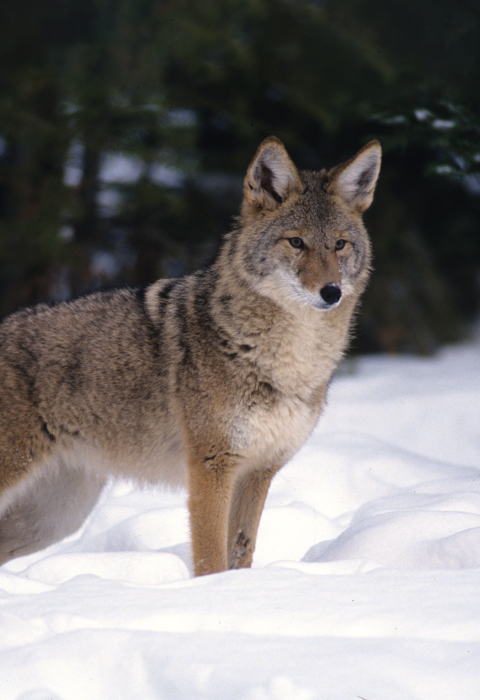What is a Coyote?
Coyotes are in the dog family, along with wolves and foxes. They have pointed ears, very narrow snouts, and a drooping, bushy tail, often with a black tip. Their fur is generally grayish-brown, but can vary into more reddish or darker hues. They are slender in build, but look bigger and more robust during winter when they have their thick winter coat of fur. They generally weigh between 25-35lbs, with some larger individuals weighing between 40-50 lbs.
Coyote Ecology
Coyotes are omnivorous, eating a variety of animals and plants. They are highly adaptable in both diet and behavior, and they have expanded their geographic range across all of North America. Coyotes are relatively "new" to Ohio (in terms of their evolutionary history), so understanding their ecology and behavior is important for us to understand long-term impacts on native species, domesticated species, and human populations.

